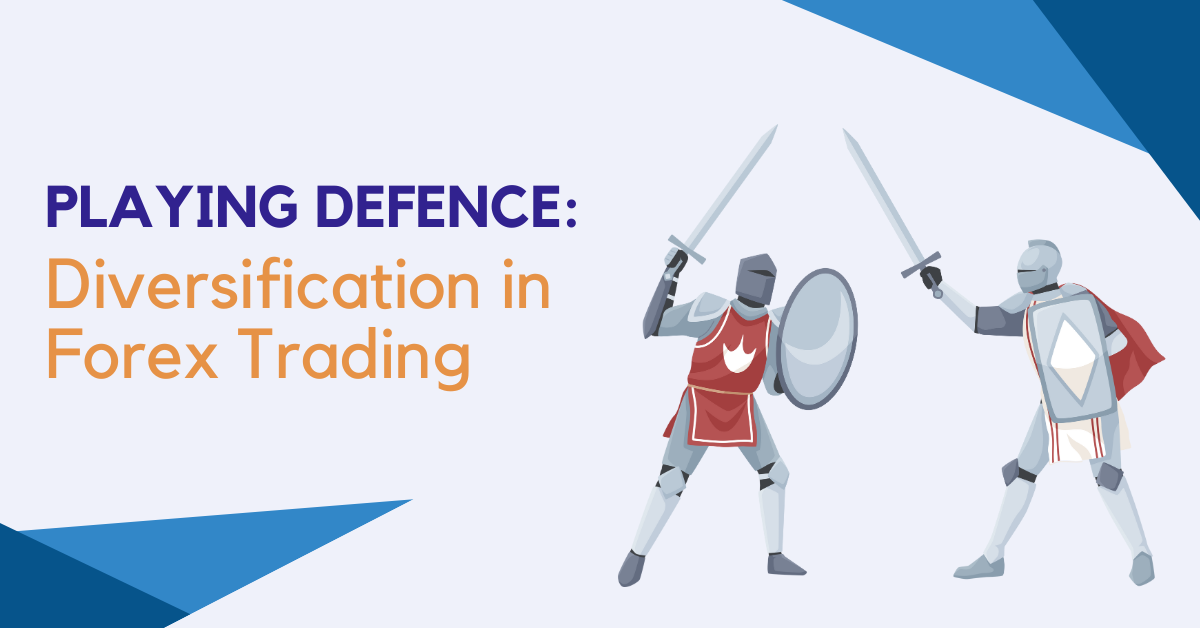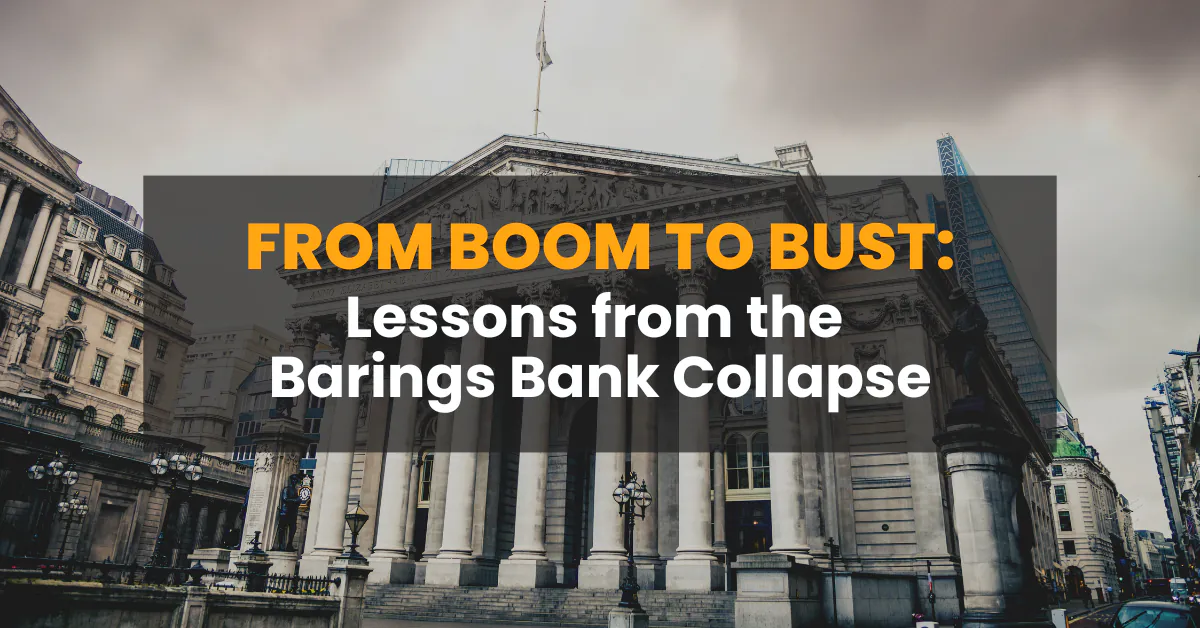Silver's Industrial Importance and Market Dynamics: A Comprehensive Analysis
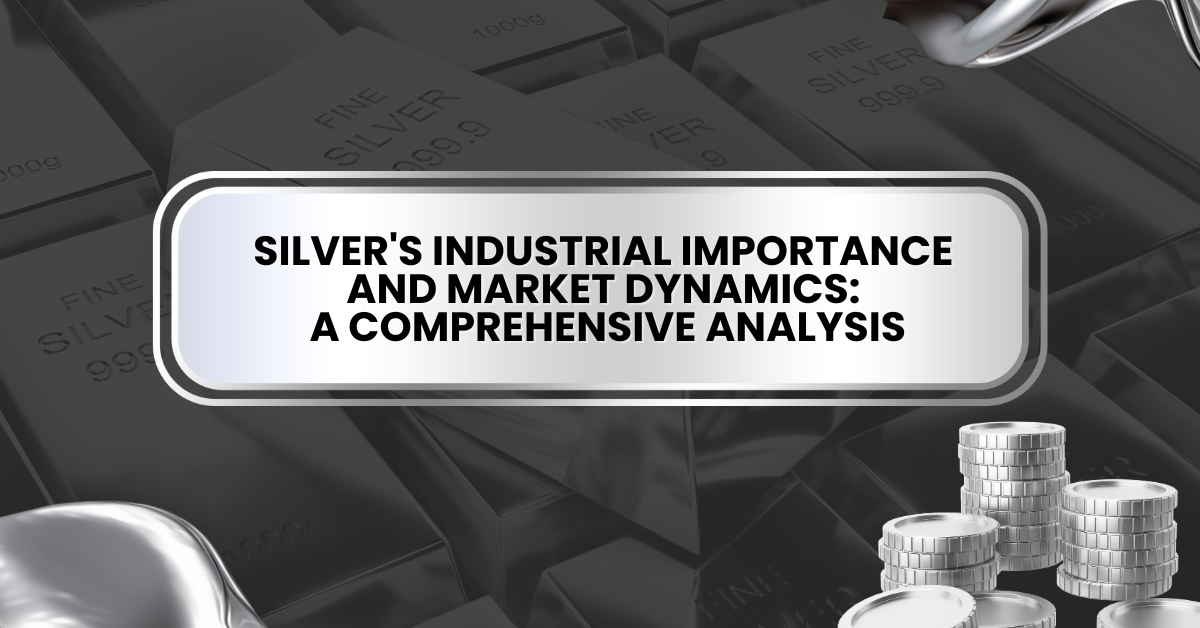
Jun Yuan Kwong, Dealer | Contract for Differences
Jun Yuan graduated from Universiti Tunku Abdul Rahman (UTAR) with a Bachelor’s Degree in Actuarial Science. He is a Dealer in the largest dealing team at Phillip Securities, specialising in CFDs.
Prior to this role, he gained valuable experience as a Unit Trust Consultant, helping clients with financial planning and investment strategies. In his free time, Jun enjoys exploring financial innovations and staying updated on market trends.

Source: tradingview.com
Since reaching its peak of US$49.51/oz in April 2011, silver has experienced a steady decline, struggling to regain substantial ground even as gold repeatedly sets new record prices in 2024. However, amid ongoing global economic uncertainties stemming from the pandemic and geopolitical tensions, such as conflicts in Ukraine and the Middle East, there has been a significant resurgence of interest in silver. Its price nearly reached US$32.75/oz, breaking out of its previous highs from February 2021 during the peak of the COVID-19 pandemic. Given the speed of the rally, silver is fast approaching US$35/oz, a level it struggled to overcome in the early 2010s.
Indeed, silver’s reputation as the “poor man’s gold” doesn’t fully capture its intrinsic value and investment potential. While it often stands in the shadow of gold, silver boasts its own unique qualities that make it a compelling asset for investors. In this article, we’ll explore the following aspects of the Silver market:
- Understanding the various uses of silver and its importance to industry.
- price performance of silver in 2023.
- factors that influence its price movements.
- Learning about Phillip CFD products specifically designed to assist traders in navigating and leveraging the volatility of the silver market.
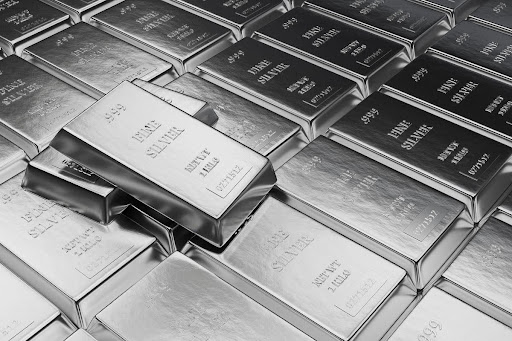
Source: Sondem / Shutterstock
Silver Usage and Industrial Importance
Silver is more than just a precious metal used in jewellery and currency, as it boasts various applications across many industries. Its versatility is attributed to its unique properties: high thermal and electrical conductivity, malleability, and corrosion resistance. Let’s delve deeper into how this lustrous metal is transforming multiple sectors.
1. Industrial Applications
Silver is the best electrical and thermal conductor of all the metals, so it’s no surprise that it’s used in industrial fabrication. In electronics, industrial silver is used mainly in multi-layer ceramic capacitors, membrane switches, silvered film, electrically heated automobile windshields, conductive adhesives and the preparation of thick-film pastes.
- Brazing and Soldering: Silver plays a crucial role in brazing and soldering processes, primarily due to its capacity to effectively bond metals together. Brazing and soldering are essential techniques utilised in metal joining, and the inclusion of silver contributes to the formation of robust and long-lasting joints. The relatively low melting point of silver helps prevent distortion of the parts being joined. Moreover, silver brazing alloys exhibit exceptional tolerance to high temperatures, rendering them particularly well-suited for applications in air conditioning, refrigeration, and electrical switches.

- Solar Panels: As the world increasingly embraces sustainable energy sources, silver assumes a vital role in photovoltaic cells. By serving as conductive ink, silver facilitates the conversion of sunlight into electricity within these cells, which are then integrated into solar panels. The metal’s high electrical conductivity significantly enhances the efficiency of solar cells, driving advancements in renewable energy technologies.
- Automotive Industry: Modern vehicles are equipped with an increasing number of electronic components. Basic functions such as starting the engine, opening power windows, adjusting power seats and closing power trunks are all activated using a silver membrane switch. Furthermore, data from the Silver Institute shows that, depending on the model, battery electric vehicles contain between 25 and 50 grams of silver, while hybrid vehicles use 18 to 34 grams of silver. That’s compared to 15 to 28 grams of silver in a light internal combustion engine vehicle [4].
- Medical Devices: Silver is utilised in various medical devices, including wound dressings, catheters, and surgical instruments, due to its antimicrobial properties and biocompatibility.
2. Jewellery
Silver is a popular choice for fashion jewellery due to its affordability, versatility, and ability to complement a wide range of styles. It’s often used to create earrings, necklaces, bracelets, and rings. Furthermore, sterling silver, an alloy containing 92.5% silver and 7.5% other metals (usually copper), is commonly used in fine jewellery due to its lustre, durability, and timeless appeal.
3. Bullion coins and silver bars
It’s vital to note silver’s significance in the financial world. Silver is still used in some circulating coins, especially in American, Australian, Canadian, Mexican and Austrian bullion coins for investors. Serving as both an investment vehicle and a hedge against inflation, silver bullion coins and bars represent tangible assets that have consistently demonstrated their ability to preserve value over time.
4. Photographic and Imaging
Silver halide crystals are sensitive to light and form the basis of traditional photographic film. When exposed to light, these crystals undergo chemical reactions, capturing images. Silver is also used in the production of photographic paper and darkroom chemicals. Despite the digital transition, silver continues to play a vital role in specific imaging technologies, such as X-rays and other radiographic films.
Silver Price Performance in 2023

Source: tradingview.com
Amid concerns of a potential recession and expectations that the US Federal Reserve may ease its monetary tightening, the price of silver did not follow gold’s upward trend throughout 2023. Instead, silver remained range-bound, experiencing fluctuations throughout the year but ultimately ending close to its initial price.
At the start of 2023, silver prices continued their rally from the last quarter of 2022, opening strong at over US$24/oz. In February 2023, the price experienced a significant drop to US$20/oz but rebounded in March. Following this rebound, silver prices peaked at more than US$26/oz in May, the highest since April 2022. After reaching this peak, silver traded within a range of US$23/oz to US$25/oz for the remainder of the year.
The trajectory of the Fed’s monetary policy was the most influential factor in silver price movements, much like it was for gold. The Federal Reserve’s aggressive monetary tightening policies, initiated in March 2022, strengthened the US dollar against other currencies and increased bond yields, exerting downward pressure and discouraged investment in precious metals such as gold and silver, which do not offer interest.
The July 2023 CPI report shows that the inflation gauge rose 3.2%, which was less than expected [3]. This marks a slowdown from 4.9% in April 2023 and is significantly down from the over 9% rate, the highest in four decades, reached in 2022. This led the Fed to pause interest rate hikes, maintaining the benchmark Federal Funds Rate target range at 5.25% to 5.50% [2]. The rate has remained unchanged since then, as indicated in the FOMC statement in September 2023, due to the cooling inflation rate.
For the overall year of 2023, the silver price remained relatively unchanged, with a minor gain of 0.19%.
What factors affect the silver price?
Silver is often considered gold’s poorer cousin, yet the two metals share a positive price correlation, though with a lag. Typically, silver’s price movements follow those of gold, but they occur later and there is a tendency for increased interest in silver as the price of gold rises. Gold has generally performed better than silver over the past few years, but the situation may soon change in favour of silver.
Silver has surged by over 25% this year, surpassing gold and emerging as one of the top-performing major commodities. While gold futures (GCM24) hit a record high of $2,448.80 per ounce on April 12, attracting considerable attention with its record-setting rally, it’s silver that’s been displaying even more robust momentum. Despite its less glamorous image, silver has been benefiting from strong financial and industrial demand. Silver futures (SIN24) rose as much as 6.59% to US$31.775 per ounce on Friday, May 17, reaching their highest level since February 2013. Yet in relative terms, silver is still cheap. We’ll further explore the factors impacting silver prices and examine its significance as a precious metal within the dynamic landscape of investment opportunities.
1. Silver Demand
Apart from its role as an investment, silver is a strategic metal with a broader range of industrial and medical applications compared to gold. While only 10% of gold output is used for industrial purposes, over 50% of silver production is dedicated to industrial applications.
Due to its significant industrial usage, silver prices are highly sensitive to global economic activity. A slowdown in economic growth can lead to decreased demand for new construction and vehicle manufacturing, subsequently reducing the demand for silver.
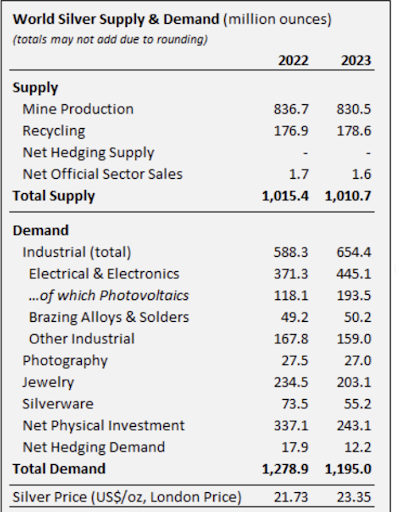
Source: Metals Focus
Total silver demand saw a decline of 7 percent to 1,195 Million ounces in 2023; however, this was following a record year in 2022, as reported by the Silver Institute [6]. The drop in demand in 2023 was mainly concentrated in India, where silver jewellery fabrication fell by 13% to 203.1 million ounces, and silverware demand fell by 25% to 55.2 million ounces, as demand eased after reaching its highest total in 2022. Moreover, the weakness in US and European jewellery consumption, along with destocking by retailers, resulted in a modest total global loss of 3%, excluding India. As with jewellery, the overall losses were almost entirely due to high local silver prices in India.
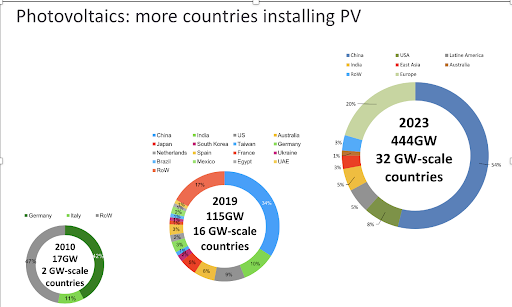
Source: Metals Focus
Despite the overall decline in demand, a new record high was set in 2023, with 654.4 million ounces of silver being used in industrial applications. Silver Institute indicated that the ongoing structural gains from green economy applications underpinned these advances. Higher-than-expected photovoltaic (PV) capacity additions reached a recorded new high of 193.5 million ounces, and the faster adoption of new-generation solar cells raised global electrical and electronics demand by a substantial 20% to 445.1 million ounces in 2023. At the same time, other green-related applications, such as power grid construction and automotive electrification, also contributed to the gains. This shows that the limited extent of thrifting and substitution played a crucial role in these overall advancements, as silver retains its irreplaceable status in numerous applications. China’s rapid expansion in PV production accounted for over 90% of global panel shipments. Growth in green applications, especially in PV, led to a significant rise in Chinese silver industrial demand, reaching a remarkable 44% to 261.2 million ounces [6].
Looking ahead at silver demand in 2024, the Silver Institute has forecasted a 2% growth. Industrial fabrication is expected to reach another all-time high, rising by 9%, propelled by an anticipated 20% gain in the PV market and healthy offtake from other industrial segments. Jewellery and silverware fabrication are predicted to rise by 4% and 7%, with the bulk of gains mainly contributed by India after the demand weakened, respectively, while bar and coin demand is forecasted to contract by 13% [6]. Despite uncertain economic conditions in some key markets, silver still presents numerous exciting new demand opportunities beyond its traditional applications and expanding role in the energy transition. For example, silver will become an indispensable material as artificial intelligence (AI) rises. The deployment of AI-related applications includes transportation, nanotechnology, biotechnology, healthcare, consumer wearables, computing, and energy in data centress, all of which should favour silver.
2. Silver Supply
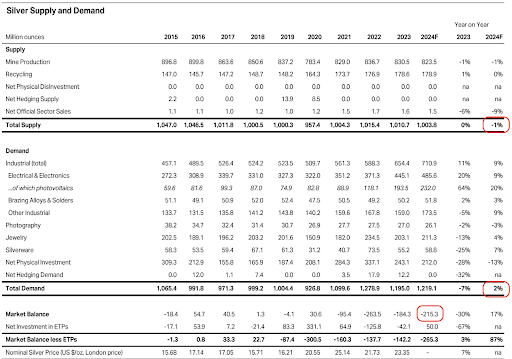
Source: Metals Focus
Silver, like gold, has a limited supply, which strengthens its fundamentals since supply frequently lags behind demand. Pure silver mines are rare, as the metal is often found alongside other minerals such as copper, zinc, and aluminium.
The Silver Institute’s data revealed that the market has been undersupplied since 2021. In that year, there was a deficit of 95 million ounces, which grew to 263 million ounces in 2022. Although the deficit decreased by 30% in 2023 due to a drop in demand, the absolute deficit of 184 million ounces remained substantial.
In 2024, the Silver Institute forecasted a modest 1% decrease in total silver supply [6]. Consequently, another large deficit is expected this year, projected at 215.3 million ounces, marking the second-largest market deficit in over 20 years. This deficit is driven by significant and growing industrial demand for silver. The forecast indicates that the supply-demand imbalance in the silver market is not a short-term issue but a structural one likely to persist in the coming years. This underscores the ongoing importance of silver in various industrial applications and highlights the challenges in meeting the increasing demand for this precious metal. Philip Newman, managing director at consultancy Metals Focus, emphasised that the deficit in the silver market serves as strong support and a foundation for its price [5].
3. Geopolitical Risks
The significance of geopolitical tensions on the prices of gold and silver cannot be underestimated. These precious metals are renowned for being safe-haven assets, particularly during times of uncertainty and instability in global politics. Recent years have been marked by major geopolitical events, including tensions between the US and countries like North Korea, China, and Iran. More recently, Russia’s war with Ukraine, the banking crisis in early 2023, and rising tensions in the Middle East due to the Israel-Hamas conflict have caused concern among investors. This uncertainty increases demand for silver, as it is seen as a store of value and a hedge against inflation and currency fluctuations. By assessing the potential impact of geopolitical tensions on gold and silver, investors can make informed decisions and effectively manage potential risks.
4. Monetary Policy: Awaiting Fed’s Next Move
The strength of the US dollar and changes in US Federal Reserve interest rates are factors that will continue to impact precious metals, alongside geopolitical issues and supply and demand dynamics. Looking first at the Fed and interest rates, it’s important to note that higher interest rates generally have a negative effect on gold and silver, while lower rates tend to be beneficial. This is because higher interest rates make interest-bearing products more attractive.
When the COVID-19 pandemic hit, the Fed reduced rates from 1 to 1.25 percent down to zero. However, rising inflation prompted the Fed and other central banks to increase rates, negatively affecting gold and silver. In February 2023, the Fed raised rates by just 25 basis points, the smallest hike since March 2022. The Fed continued with these small rate hikes over the next year, with the last one occurring in July 2023, ultimately deciding to keep the target range for the federal funds rate unchanged at 5.25-5.50% [7].
Minutes from the April 30-May 1 policy meeting of FOMC indicated that the inflation has eased over the past year but there has been a lack of further progress toward the Committee’s 2 percent inflation objective. Furthermore, the Fed will continue to monitor the implications of incoming information on the economic outlook when considering any adjustments to the target range for the federal funds rate [1]. Markets have continued to adjust their expectations for cuts this year. As of 25 May 2024, futures pricing indicated about a 44.9% chance of the first reduction coming in September, compared to earlier in the year when at least six quarter-percentage point cuts were expected. Although the expected quarter-percentage point cuts have been reduced, many investors still believe that the Fed would start to cut rates by this year.
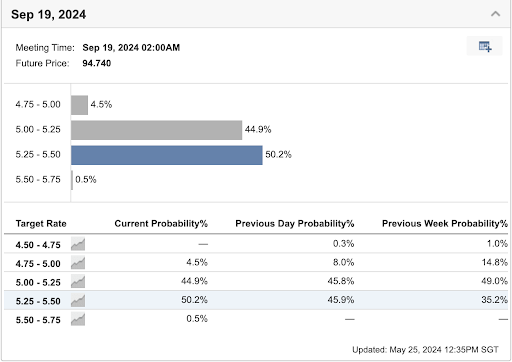
Source: investing.com
Conclusion
In conclusion, the demand for silver is poised to continue increasing in the future, driven by its crucial role in industrial applications and emerging technologies, particularly in the green economy. This sustained demand, coupled with ongoing supply constraints, suggests that the market deficit for silver will continue to widen. Additionally, the uncertainty stemming from geopolitical issues will likely influence silver prices, as the metal remains a preferred safe-haven asset during times of global instability. Lastly, the future moves of the US Federal Reserve regarding interest rates will be a significant factor in driving silver prices, with lower rates potentially boosting its appeal as an investment. Collectively, these factors underscore silver’s dynamic and influential position within the precious metals market.
Gain Exposure with Silver USD50 CFD
As one of Phillip CFD’s most popular commodities in 2024, Silver USD50 CFD tracks the performance of silver spot prices, enabling traders to engage in real-time trading without the necessity of purchasing physical silver. This commodity appeals to traders drawn to silver for speculative purposes, with the aim of profiting from short-term price fluctuations by buying at low prices and selling at high prices. Moreover, investors may include silver trading in their broader investment strategy, seeking long-term capital appreciation.
Benefits of Trading the Silver USD50 CFD:
Flexibility: CFDs offer flexibility in trading strategies, allowing traders to go long (buy) or short (sell) positions based on their market outlook. As one of the most volatile markets in the world, year-to-date, this versatility enables traders to profit from both rising and falling markets under various market conditions.
Liquidity: The silver market boasts high liquidity, making it relatively simple to buy and sell silver swiftly at equitable prices. This liquidity facilitates seamless entry and exit for traders, minimising the likelihood of encountering substantial price distortions or barriers. Additionally, it fosters efficient price discovery and reduces the risk of being unable to exit a trade.
Accessibility and Diversification: Silver USD50 CFD provides accessibility to the performance of silver prices without the need for traders to directly purchase physical silver. This convenience allows them to gain exposure to a diversified portfolio with ease.
Leverage: Our Silver USD50 CFD offers traders 5X leverage, allowing them to control larger positions with a small capital outlay. As Silver prices break a 10-year high, traders can open long or short positions with just a 20% capital requirement, potentially amplifying returns. However, note that losses are also magnified to the same extent if the market moves against your position.
Hedging against inflation: Silver, as a precious metal, is widely recognized as a hedge against inflation. When inflation rises, fiat currencies often lose value, but historically, the price of silver has demonstrated an ability to increase. Thus, trading silver can serve as a means to safeguard the purchasing power of assets during periods of inflation.
Promotion

As we have explored, Palantir Technologies, Taiwan Semiconductor Manufacturing Company (TSMC), and Microsoft stand as leading players in the tech industry, each driving forward with unique strategies and ground-breaking innovations. These companies not only shape the future of technology but also present significant opportunities for investors looking to capitalise on their growth and market influence.
To encourage you to take advantage of these opportunities, we’re excited to offer a special promotion. Open a CFD account and start trading with us between now and 31 August, to receive free CFD shares worth up to US$400 (Palantir, TSMC, or Microsoft)! This is a limited-time offer designed to help you kickstart your investment journey with some of the most promising tech companies in the market. Click here to learn more!
References
- https://www.federalreserve.gov/monetarypolicy/files/fomcminutes20240501.pdf
- https://www.federalreserve.gov/monetarypolicy/files/monetary20230920a1.pdf
- https://www.cnbc.com/2023/08/10/cpi-inflation-july-2023-.html
- https://www.silverinstitute.org/silver-consumption-global-automotive-sector-approach-90-million-ounces-2025/
- https://www.silverinstitute.org/wp-content/uploads/2023/11/SilverMarket2023_interim-report.pdf
- https://www.silverinstitute.org/
- https://www.federalreserve.gov/default.htm
More Articles
Playing Defence: Diversification in Forex Trading
Learn how strategic planning and risk management can help you navigate the highs and lows of the forex market. Don’t miss out on unlocking the secrets to long-term profitability!
From Boom to Bust: Lessons from the Barings Bank Collapse
Did you know that the collapse of Barings Bank in 1995 was from massive losses incurred by a rogue trader? Delve into the tale of how Nick Leeson’s fraudulent investments sent shockwaves through the financial world.
Japan's Economic Resurgence – Unveiling the Tailwinds Behind Nikkei 225’s Record Leap
Discover the driving forces behind Japan’s market surge, delve into its economic performance and learn how CFD products can help you navigate the Japanese market’s volatility via our article!
Disclaimer
These commentaries are intended for general circulation and do not have regard to the specific investment objectives, financial situation and particular needs of any person. Accordingly, no warranty whatsoever is given and no liability whatsoever is accepted for any loss arising whether directly or indirectly as a result of any person acting based on this information. You should seek advice from a financial adviser regarding the suitability of any investment product(s) mentioned herein, taking into account your specific investment objectives, financial situation or particular needs, before making a commitment to invest in such products.
Opinions expressed in these commentaries are subject to change without notice. Investments are subject to investment risks including the possible loss of the principal amount invested. The value of units in any fund and the income from them may fall as well as rise. Past performance figures as well as any projection or forecast used in these commentaries are not necessarily indicative of future or likely performance.
Phillip Securities Pte Ltd (PSPL), its directors, connected persons or employees may from time to time have an interest in the financial instruments mentioned in these commentaries.
The information contained in these commentaries has been obtained from public sources which PSPL has no reason to believe are unreliable and any analysis, forecasts, projections, expectations and opinions (collectively the “Research”) contained in these commentaries are based on such information and are expressions of belief only. PSPL has not verified this information and no representation or warranty, express or implied, is made that such information or Research is accurate, complete or verified or should be relied upon as such. Any such information or Research contained in these commentaries are subject to change, and PSPL shall not have any responsibility to maintain the information or Research made available or to supply any corrections, updates or releases in connection therewith. In no event will PSPL be liable for any special, indirect, incidental or consequential damages which may be incurred from the use of the information or Research made available, even if it has been advised of the possibility of such damages. The companies and their employees mentioned in these commentaries cannot be held liable for any errors, inaccuracies and/or omissions howsoever caused. Any opinion or advice herein is made on a general basis and is subject to change without notice. The information provided in these commentaries may contain optimistic statements regarding future events or future financial performance of countries, markets or companies. You must make your own financial assessment of the relevance, accuracy and adequacy of the information provided in these commentaries.
Views and any strategies described in these commentaries may not be suitable for all investors. Opinions expressed herein may differ from the opinions expressed by other units of PSPL or its connected persons and associates. Any reference to or discussion of investment products or commodities in these commentaries is purely for illustrative purposes only and must not be construed as a recommendation, an offer or solicitation for the subscription, purchase or sale of the investment products or commodities mentioned.
This advertisement has not been reviewed by the Monetary Authority of Singapore.
CFD Promotion Disclaimer
This promotion is provided to you for general information only and does not constitute a recommendation, an offer or solicitation to buy or sell the investment product mentioned. It does not have any regard to your specific investment objectives, financial situation or any of your particular needs. Accordingly, no warranty whatsoever is given and no liability whatsoever is accepted for any loss arising whether directly or indirectly as a result of your acting based on this information.
Investments are subject to investment risks. The risk of loss in leveraged trading can be substantial. You may sustain losses in excess of your initial funds and may be called upon to deposit additional margin funds at short notice. If the required funds are not provided within the prescribed time, your positions may be liquidated. The resulting deficits in your account are subject to penalty charges. The value of investments denominated in foreign currencies may diminish or increase due to changes in the rates of exchange. You should also be aware of the commissions and finance costs involved in trading leveraged products. This product may not be suitable for clients whose investment objective is preservation of capital and/or whose risk tolerance is low. Clients are advised to understand the nature and risks involved in margin trading.
You may wish to obtain advice from a qualified financial adviser, pursuant to a separate engagement, before making a commitment to purchase any of the investment products mentioned herein. In the event that you choose not to obtain advice from a qualified financial adviser, you should assess and consider whether the investment product is suitable for you before proceeding to invest and we do not offer any advice in this regard unless mandated to do so by way of a separate engagement. You are advised to read the trading account Terms & Conditions and Risk Disclosure Statement (available online at https://www.poems.com.sg/) before trading in this product.





